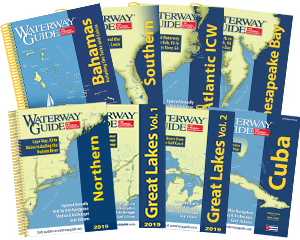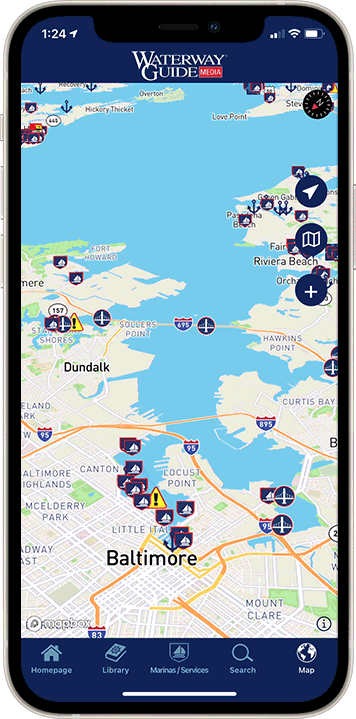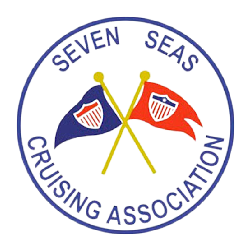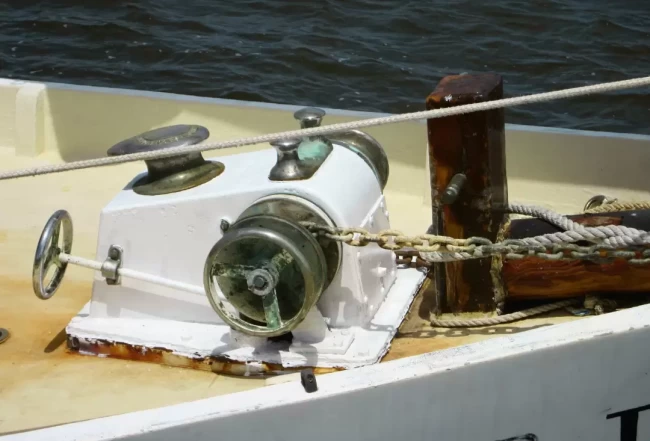
Even if you don't anchor often, there will still be times when you may need to depend on your windlass. To keep your windlass reliable, you should follow the manufacturer's maintenance recommendations, often a yearly disassembly, cleaning, lubing, checking alignments, and replacing worn or broken parts.
But on a day-to-day basis, while using your windlass it is important not to exceed its Work Load Limit (WLL). For recreational boats this is typically between 600 and 800 lbs.
One danger to a windlass is loads caused by wind gusts, seas and waves—surge loads—which can easily double or triple the load on the windlass. Even the actions of setting or breaking out the anchor can exceed the WLL of the windlass, as can pulling the boat up to the anchor with the windlass.
To avoid overloading and possibly damaging your windlass, here are some suggestions:
If your windlass has a pawl, in order to ease the load on the windlass mechanism, engage it when weighing or setting the anchor. But remember, even with the pawl engaged the windlass WLL still applies.
When retrieving the anchor, do not use the windlass to bring the boat up to the anchor against wind, waves, or current; instead, use the engine. Another approach, albeit slower, is simply to take in the slack as it develops in the rode.
A chain stopper, if able to be installed in-line with the run of a chain rode, can be used to keep the load off the windlass mechanism. Slack off the rode at the windlass once the stopper has taken the strain.
An alternative to a chain stopper is a short, preferably low-stretch line, called a soft stopper, which can be used on rope or chain. One end is belayed to a cleat, Samson post, possibly around the base of the windlasses, or to any other strongly-enough installed fitting, the other end is attached to the rode—we favor using a rolling hitch for this purpose. Here, too, the rode should be slackened once the stopper has taken a strain.
To keep the strain off of the windlass mechanism while anchored, install a snubber. To use, attach one end to the rode— here too, a rolling hitch works well— and make fast the other end to a point on the vessel that is strong enough to handle the load. The higher the wind, the larger the diameter and the longer the snubber should be. Once the snubber is taking a strain be sure there is enough slack in the rode for when the snubber reaches maximum stretch.
An added benefit to using a snubber is that it will also protect a rope rode from chafe in the areas in which the two overlap. For those who prefer or require one, a bridle is an acceptable alternative to a snubber.
Lastly, if you have an electric windlass, turn off its circuit breaker when done deploying or retrieving the anchor. There are numerous instances, which, due to an electrical fault, the windlass has self-activatedup or downeither is undesirable due to the damage that can result.
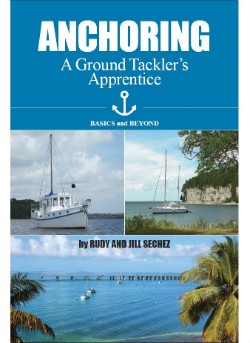
Find out more about veteran cruisers Rudy and Jill Sechez, Trawler Training and Anchoring Consultants, at their website: trawlertrainingabc.com. You can purchase their book, "ANCHORING−A Ground Tackler's Apprentice" through Waterway Guide Ship Store (waterwayguide.com).


